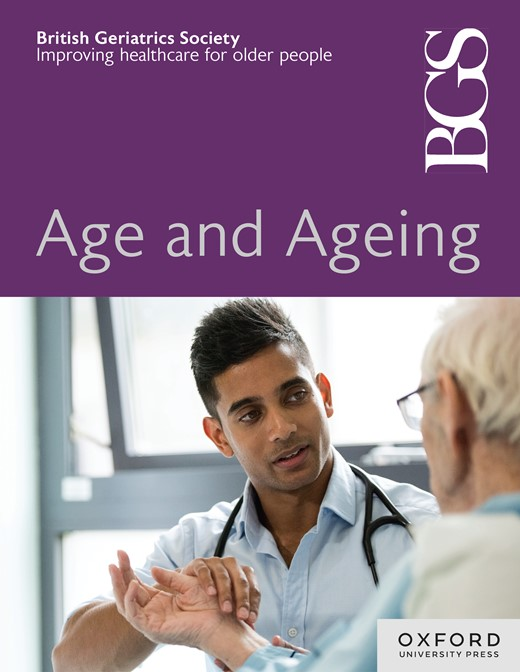肌萎缩性脊髓侧索硬化症作为肌少症的疾病模型
IF 7.1
2区 医学
Q1 GERIATRICS & GERONTOLOGY
引用次数: 0
摘要
肌肉疏松症是指肌肉质量和功能的逐渐下降,传统上被认为是一种与年龄相关的过程,会导致一系列不良后果。然而,有广泛报道称,肌肉疏松症可能在生命早期因各种疾病(即与疾病相关的肌肉疏松症)而发生,其中包括神经肌肉疾病。早在 2010 年,欧洲老年人肌肉疏松症工作组就将以运动神经元缺失为特征的神经退行性疾病纳入了肌肉疏松症的发病机制。肌萎缩性脊髓侧索硬化症(ALS)和老年性肌肉疏松症尽管在发病机制上存在一些差异,但两者都有共同的特点,如运动单位丧失、肌肉纤维萎缩、氧化应激、线粒体功能障碍和炎症。老年肌肉的组织学表现为纤维大小不均、纤维分组和卫星细胞丧失,这与渐冻症患者的情况类似。遗憾的是,肌萎缩性脊髓侧索硬化症患者的肌肉松弛过程在很大程度上被忽视了,有关该患者群体肌肉松弛状况的文献也非常稀少。一些用于评估老年人肌肉疏松症的工具也可用于 ALS 患者。目前,还没有获得批准的特效药物可以逆转运动神经元的损伤或治愈 ALS,就像没有药物可以治疗肌肉疏松症一样。不过,一些针对肌肉的药物,如肌生长抑素和哺乳动物雷帕霉素靶点抑制剂,正在针对肌肉疏松症和渐进性脊髓侧索硬化症进行研究。开发以骨骼肌为靶点的新治疗药物,可能对渐冻症患者和患有肌肉疏松症的老年人都有好处。本文章由计算机程序翻译,如有差异,请以英文原文为准。
Amyotrophic lateral sclerosis as a disease model of sarcopenia
Sarcopenia, the progressive decline of muscle mass and function, has traditionally been viewed as an age-related process leading to a broad range of adverse outcomes. However, it has been widely reported that sarcopenia can occur earlier in life in association with various conditions (i.e. disease-related sarcopenia), including neuromuscular disorders. As early as 2010, the European Working Group on Sarcopenia in Older People included neurodegenerative diseases characterised by motor neuron loss among the mechanisms underlying sarcopenia. Despite some differences in pathogenetic mechanisms, both amyotrophic lateral sclerosis (ALS) and age-related sarcopenia share common characteristics, such as the loss of motor units and muscle fibre atrophy, oxidative stress, mitochondrial dysfunction and inflammation. The histology of older muscle shows fibre size heterogeneity, fibre grouping and a loss of satellite cells, similar to what is observed in ALS patients. Regrettably, the sarcopenic process in ALS patients has been largely overlooked, and literature on the condition in this patient group is very scarce. Some instruments used for the assessment of sarcopenia in older people could also be applied to ALS patients. At this time, there is no approved specific pharmacological treatment to reverse damage to motor neurons or cure ALS, just as there is none for sarcopenia. However, some agents targeting the muscle, like myostatin and mammalian target of rapamycin inhibitors, are under investigation both in the sarcopenia and ALS context. The development of new therapeutic agents targeting the skeletal muscle may indeed be beneficial to both ALS patients and older people with sarcopenia.
求助全文
通过发布文献求助,成功后即可免费获取论文全文。
去求助
来源期刊

Age and ageing
医学-老年医学
CiteScore
9.20
自引率
6.00%
发文量
796
审稿时长
4-8 weeks
期刊介绍:
Age and Ageing is an international journal publishing refereed original articles and commissioned reviews on geriatric medicine and gerontology. Its range includes research on ageing and clinical, epidemiological, and psychological aspects of later life.
 求助内容:
求助内容: 应助结果提醒方式:
应助结果提醒方式:


